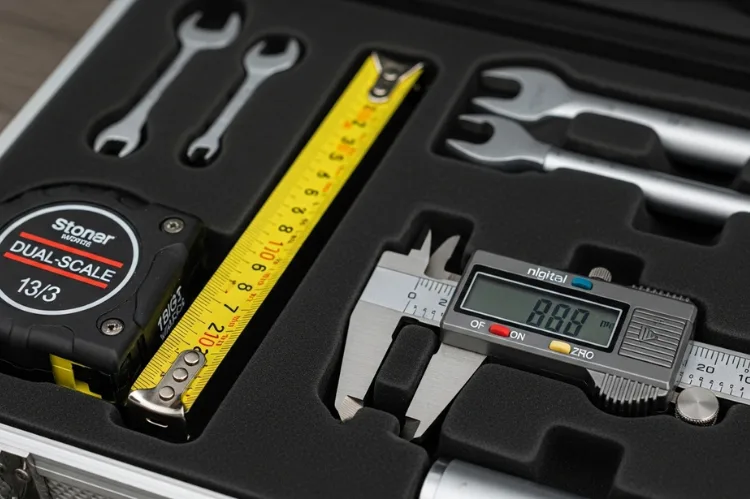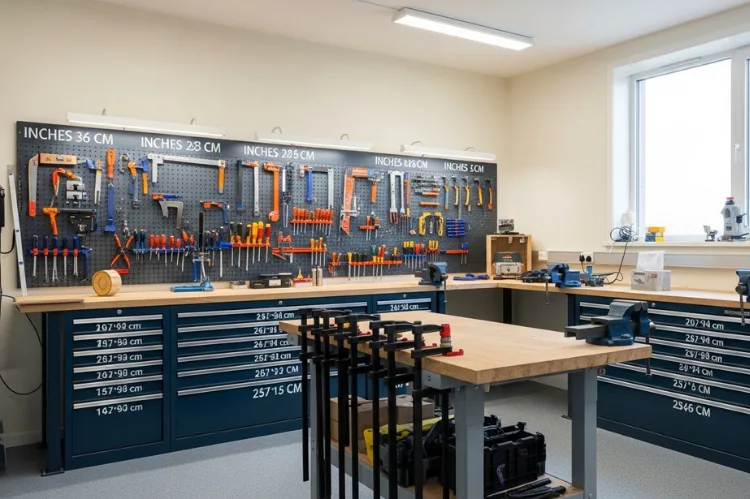If you’ve ever followed a DIY tutorial from another country, you’ve probably hit the same snag—centimeters instead of inches. That small difference can cause big design flaws. Whether you’re sewing a shirt, 3D printing a part, or working on home remodeling, mixing measurement systems leads to confusion fast.
This DIY guide to global measurements gives you the tools to avoid errors and finish your projects smoothly. It’s practical, simple, and made for real-world use, no matter which units you prefer.
Understanding the Two Systems: Inches vs Centimeters
Most people either use the imperial or the metric system. You might design in inches, but many tools and materials use centimeters. This mix can be confusing if you’re not prepared.
In the imperial system, one foot has 12 inches. In the metric system, one meter has 100 centimeters. That means metric units are based on 10s, while imperial units follow a different scale.
North America sticks with inches, but most of the world uses centimeters. That’s why your online orders or international plans often show metric sizes.
Here’s a quick comparison:
- 1 inch = 2.54 centimeters
- 12 inches = 30.48 centimeters
- 1 foot = 0.3048 meters
Knowing both systems helps you stay accurate when switching between plans, tools, or hardware. Even if you prefer inches, learning the other side pays off.
Why Small Errors Make Big Problems

Minor conversion errors might seem harmless, but they can throw off an entire project. Just a few millimeters of miscalculation—like rounding 2.54 cm to 2.5—can multiply into bigger problems across multiple cuts. The result? Misaligned joints, uneven edges, and holes that don’t line up.
That happens often with furniture assembly, wall-mounted fixtures, or anything that relies on precision and balance. One slight error in your base measurement can cause the entire structure to shift. Brackets won’t sit evenly, pre-cut templates won’t match, and metric screws won’t fit drilled holes.
To avoid these issues, especially if you are moving to a new space and starting a new project, pack smart and with a clear plan. Bring all necessary tools, fasteners, and a reliable conversion chart to avoid guessing on the fly. Following efficient packing hacks not only cuts costs but also helps you stay organized and precise. A little extra care upfront makes a big difference in the quality, safety, and finish of your project.
Easy Ways to Convert Units Accurately

The simplest way to avoid mistakes is to use tools that show both inches and centimeters. Many tape measures have dual scales so that you can read both units side by side. Digital calipers and rulers with clear markings also help you get exact readings without doing mental math.
When you need to convert, multiply inches by 2.54 to get centimeters. For example, 10 inches × 2.54 = 25.4 cm. You can also use free apps or trusted online converters to speed things up. Keep a small chart of common conversions nearby while you work. That way, you can check quickly before cutting or drilling.
Tools That Make Cross-Unit Designing Simple

Using the right tools takes the stress out of switching between inches and centimeters. Some measuring tools are built to show both units clearly, so you don’t have to guess or convert in your head. Here are a few that can make your work easier:
- Dual-scale tape measures show both inches and centimeters on one side
- Digital calipers switch units with a button press for quick checks
- Laser distance meters often include unit settings you can toggle
- Rulers with both systems give you fast side-by-side comparisons
- Design software with auto-conversion handles measurements as you draw or plan
Keeping these tools nearby makes it easier to work with parts, plans, or instructions from anywhere. You’ll save time and avoid guesswork.
DIY Guide to Global Measurements: Tips for Working in Mixed Units

Mixing inches and centimeters doesn’t have to slow you down—if you stay organized. The key is to remain consistent and check your numbers before you start building.
Use these simple habits to keep measurements accurate:
- Stick to one unit system for the full project, then convert if needed
- Mark your cuts and parts with the correct unit label (in or cm)
- Round only after all your calculations are done
- Double-check measurements before drilling, cutting, or gluing
- Use test scraps to confirm fit when switching between unit systems
Switching back and forth without a plan leads to costly mistakes. A few extra checks can save you time and materials.
Common DIY Projects Affected by Measurement Mix-ups

Some DIY projects are especially sensitive to unit confusion. Cabinet builds often use inch-based designs, but the hardware—like hinges or brackets—might be measured in centimeters. That small mismatch can lead to gaps or crooked parts.
Sewing and woodworking templates are also tricky. Many downloads come from countries using the metric system. If you skip the conversion, your pieces won’t match up.
Wall mounts and roof framing can fail, too. You might measure in inches, but the included screws or anchors follow metric sizing. That difference can cause loose fittings or misaligned holes.
Even smaller tasks like crafting or printing go off track if units aren’t handled carefully from the start.
How to Plan for a Global Workspace

Working with different measurement systems takes some preparation. Using this DIY guide to global measurements will help you set up a workspace that handles both inches and centimeters with ease.
Start by checking the specs of tools and materials before you buy. Look for items that list sizes in both units or ask suppliers if they have options. Keep a simple conversion chart handy for quick reference.
It also helps to label your tools and work areas clearly, so you always know which system you’re using. Planning ahead this way saves frustration and keeps your projects on track, no matter where your materials come from.
Quick Tricks to Make Conversion Second Nature

Getting comfortable with inches and centimeters takes practice. Try these simple tricks to build your confidence:
- Memorize key conversions like 1 inch = 2.54 cm and 10 cm ≈ 4 inches
- Keep conversion labels on your most-used tools for quick reference
- Practice converting measurements during everyday tasks, like measuring household items
- Stick to one system while measuring, then convert afterward if needed
- Test fit small pieces before making final cuts or holes
These habits help you work faster and avoid errors, making conversions feel natural over time.
Precision Across Borders Starts with Awareness

Mastering measurements is easier than it seems when you have a solid DIY guide to global measurements by your side. By paying attention to the small details and embracing both inches and centimeters, you open the door to smoother projects and less waste.
This guide isn’t just about numbers; it’s about giving you the confidence to create without limits, no matter where your plans or materials come from. With clear steps and smart habits, you’ll build with precision and enjoy every step of the process.
Read Next: DIY Upgrades That Can Boost Your Home Appraisal Value

